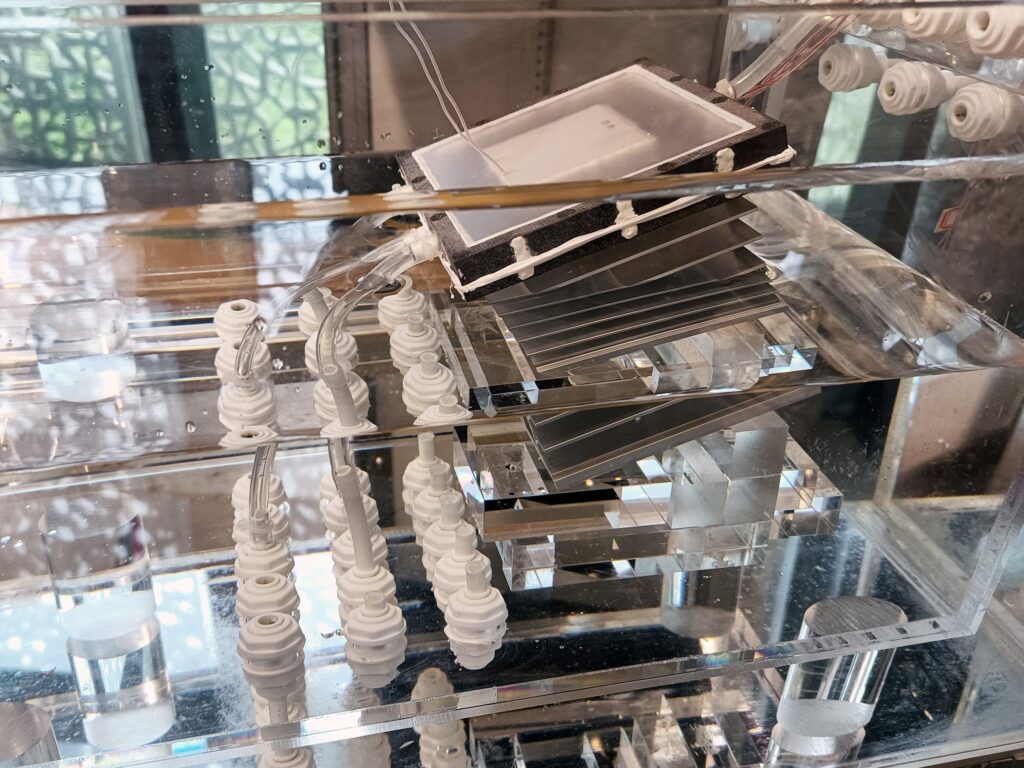- Researchers at MIT have created a solar-powered device that can make seawater drinkable.
- The team says the device can remove the salt from seawater for less than the cost of US tap water.
- This process, called desalination, is key to solving global water scarcity, one expert told Insider.
Researchers at MIT have created a device that may soon be able to turn seawater into drinking water for entire households using nothing but solar energy.
And, to top it off, the water produced by this device could eventually cost less than US tap water, according to a paper published last week in the peer-reviewed journal Joule.
Yang Zhong, a graduate student at MIT and an author of the September 27 paper, said this desalination device is more efficient, longer-lasting, and cheaper than previous desalination devices.
"After a few years of operation, the cost of the water produced from our system could be lower than that of the tap water price," Zhong told Insider.
Desalination is the process of removing the salt from saline water, like seawater, to make it drinkable. It's a particularly helpful method for providing drinking water to water-scarce regions, like the Middle East and North Africa, according to Manzoor Qadir, an environmental scientist and deputy director of the United Nations University who was not involved in the MIT study.
The new device also relies on solar power, meaning users don't have to account for the cost of electricity when converting their water, according to the study. This eliminates a major financial barrier, especially for low-income countries experiencing water scarcity, Qadir said.
Now that researchers have this device operational in a lab setting, Zhong said the next major hurdle is getting it into the real world. That will require more testing to discover exactly how durable the device is and how much brine — salt-rich water that is a waste product of the desalination process — it expels.
Measuring brine production is important because it's so salty that, when disposed in the ocean in a single area over long periods of time, it can harm some aquatic life, according to Qadir.
But, this negative impact can be mitigated with the right tools.
"The trade-off is that desalination produces brine, but it's not actually a big deal because now there are more and more technologies emerging to minimize brine production," Qadir told Insider. "They're also trying to find fish species that can tolerate very high levels of salts. So it's not actually an issue, but still there is a need to keep investigating."
The team is also working to scale the device to a larger size so that it can serve more people. If the team can successfully build a larger model, it's possible their device could provide enough daily drinking water for a small family, Zhong said.
This process of scaling the device will be one of the biggest challenges the team faces.
"The main challenge is the scale issue," Qadir said. "When it comes to developing the device on a larger scale, on a commercial scale, then the challenges actually start coming."
The team is also investigating how this device could help serve larger communities should scaling efforts go as planned — and they've already received inquiries from both domestic and international organizations about the product, according to Zhong.
This development comes just months after the 2023 United Nations World Water Development Report warned of a looming water scarcity crisis around the world. For Qadir, desalination is a key factor in solving this water crisis.
"Desalination is the future of water resource augmentation," Qadir said.
